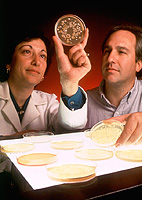
Zarzuela is a Spanish lyric-dramatic genre that alternates between spoken and sung scenes, the latter incorporating operatic and popular songs, as well as dance. The etymology of the name is uncertain, but some propose it may derive from the name of a Royal hunting lodge, the Palacio de la Zarzuela near Madrid, where, allegedly, this type of entertainment was first presented to the court. The palace was named after the place called "La Zarzuela" because of the profusion of brambles (zarzas) that grew there, and so the festivities held within the walls became known as "Zarzuelas".

Federico del Sagrado Corazón de Jesús García Lorca, known as Federico García Lorca, was a Spanish poet, playwright, and theatre director.
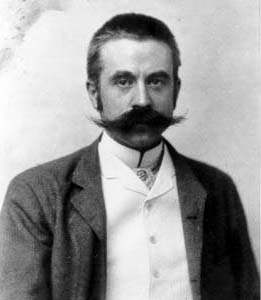
Stanford White was an American architect. He was also a partner in the architectural firm McKim, Mead & White, the frontrunner among Beaux-Arts firms. He designed many houses for the rich as well as numerous public, institutional, and religious buildings. His design principles embodied the "American Renaissance".
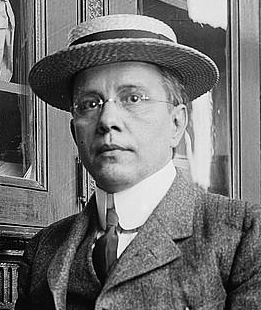
Harry Kendall Thaw was the son of Pittsburgh coal and railroad baron William Thaw Sr. Heir to a multimillion-dollar mine and railroad fortune, Thaw had a history of severe mental instability and led a profligate life. He is most notable for shooting and killing the renowned architect Stanford White on June 25, 1906, on the rooftop of Madison Square Garden in front of hundreds of witnesses. Thaw had become obsessed with his hatred of White. He thought White had blocked his access to the social elite of New York, and White had also had a previous relationship with Thaw's wife, the model/chorus girl Evelyn Nesbit. White and Nesbit had a sexual relationship in 1901–1902, when she was 16–17 years old, and their relationship had allegedly begun with White plying Nesbit with alcohol and assaulting her while she was unconscious. In Thaw's mind, the relationship had "ruined" her. Thaw's trial for murder was heavily publicized in the press, to the extent that it was called the "trial of the century". After one hung jury, he was found not guilty by reason of insanity.
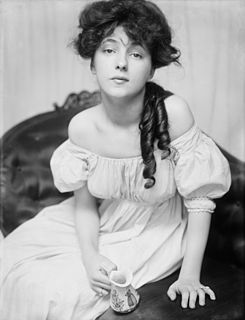
Florence Evelyn Nesbit, known professionally as Evelyn Nesbit, was an American artists' model, chorus girl, and actress.

A microbiological culture, or microbial culture, is a method of multiplying microbial organisms by letting them reproduce in predetermined culture medium under controlled laboratory conditions. Microbial cultures are foundational and basic diagnostic methods used extensively as a research tool in molecular biology.

Federico Piovaccari is an Italian footballer who plays for Spanish club Córdoba CF as a striker.

Federico Julián Fazio is an Argentine professional footballer who plays as a central defender for Italian club A.S. Roma.
Carlos Federico Arias Ortiz is a Mexican biochemist specialized in rotaviri. Along his wife, Susana López Charretón, he has been a co-recipient of both the 2001 Carlos J. Finlay Prize for Microbiology and the 2008 TWAS Prize in Biology.
Uriburu is Basque language surname of Basque origin, which means "head of town" in the Basque language, from uri ("town") and buru. An alternative spelling is Uruburu. The surname may refer to:

Federico Javier Santander Mereles is a Paraguayan footballer who plays for Italian club Bologna and the Paraguay national football team.
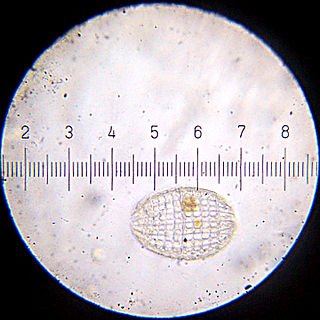
Coleps is a genus of ciliates in the class Prostomatea with barrel-shaped bodies and a test made of biomineralized plates.
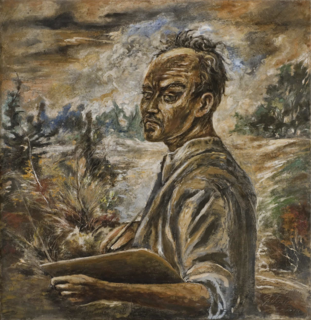
Federico Heraclio Cantú Garza was a Mexican painter, engraver and sculptor. While considered to be a member of the Mexican muralism movement, his style was noticeably different, mostly for adhering to older and more academic forms of painting and sculpture. He had his most success exhibiting in the United States and Europe, but he did murals and sculptures in Mexico. His best known work is a sculpture called La maternidad which was adapted as the logo of the Instituto Mexicano de Seguro Social (IMSS).
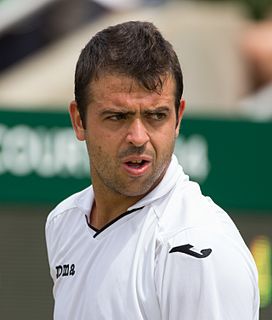
Íñigo Cervantes Huegun is a Spanish professional tennis player.

Climacostomum is a genus of unicellular ciliates, belonging to the class Heterotrichea.
Federico Alonso Renjifo Vélez is the 25th Ambassador of Colombia to France dually accredited as Non-Resident Ambassador of Colombia to Algeria and Monaco. A Colombian lawyer and economist, he also served as the 30th Minister of Mines and Energy, and 10th Minister of the Interior.
Federico Matías Falcone is an Argentine professional footballer who plays for Portuguese club Boavista F.C. as a centre forward.
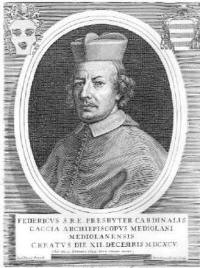
Federico Caccia was an Italian diplomat, Cardinal, and Archbishop of Milan from 1693 to 1699.

The Colegio Español Federico García Lorca is a Spanish government-operated school for children from 3 to 12 years old in Paris, France that teaches in Spanish language, French language and English language. It is located at 53 Rue de la Pompe in the 16th arrondissement. It is affiliated to the institute Liceo Español Luis Buñuel, in the Paris area.

